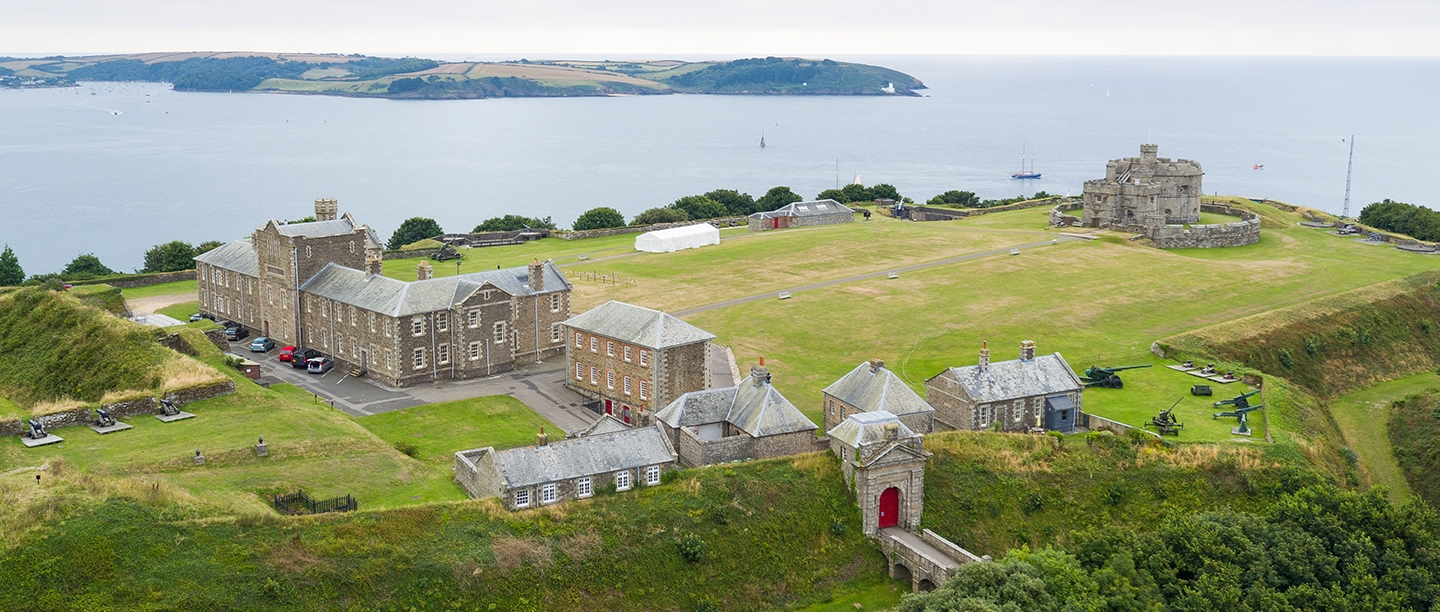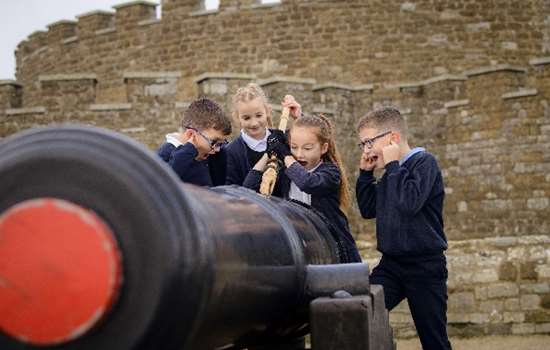Get to Grips with the Area
Henry VIII and his government feared an invasion by the armies of France and Spain, whose monarchs were opposed to Henry's break with the Catholic Church. These new forts had big guns that could shatter enemy warships and troop transports that might attempt to capture English ports at the beginning of an invasion. The circular shape of the forts and their multiple-tiered design allowed all-round outward firing.
Pendennis Castle and St Mawes Castle are situated on opposite sides of the Fal estuary so that their guns could cross fire against ships trying to enter the anchorage. Carrick Roads would have been a perfect location for an enemy force to establish a base, an important factor in the forts' construction. The Spanish planned invasions several times during a long war with England (1585-1604) including attempts in 1584, 1588 (the 'Great Armada') and 1597 – in the last year, Carrick Roads was the target. All attempts failed.
The strategic location of these two fortresses meant that they were garrisoned for the next 360 years. Pendennis became a much larger fort after works at the end of the 16th century and was subject to a long siege in 1646 during the First English Civil War. Both castles were periodically modernised in response to conflict, notably during the French Revolutionary and Napoleonic Wars, and the First and Second World Wars, until closure in the 1950s.
Today, the buildings of Pendennis Castle retain the physical evidence of change during four centuries of adaptation but at its centre, just as at St Mawes Castle, the original castle appears largely as Henry VIII intended.
Top Resources
-

Pendennis Castle and St Mawes Castle Teachers' Kit (KS1-KS4+)
Use the historical information, glossary, timeline and sources in our Teachers' Kit to learn more about the story of Pendennis Castle and St Mawes Castle.
-
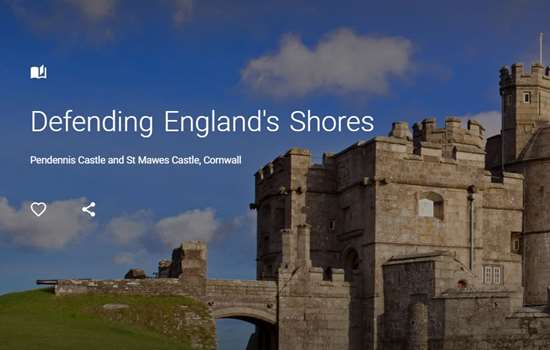
Defending England's Shores: Pendennis Castle and St Mawes Castle - Google Arts and Culture Exhibit
Explore Pendennis Castle and St Mawes Castle in this online exhibit to find out more about their features and construction from contemporary sources.
-
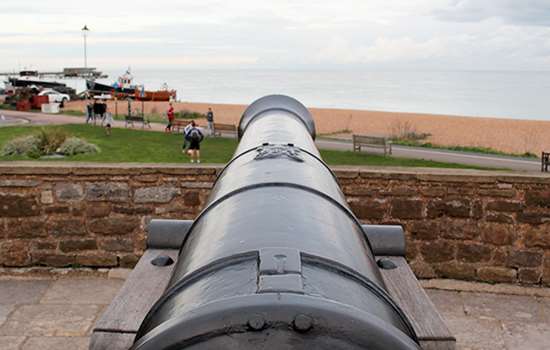
Tudors: Warfare
Learn more about how Henry VIII's aggressive foreign policy and national defence programme shaped Tudor warfare and military construction.
-
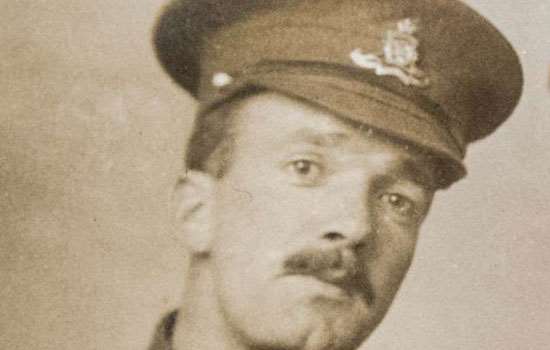
A Soldier's Letters: Pendennis to the Western Front
Read about how John Glasson Thomas's letters to Gertie Brooks offer a very special record of one man's Great War.
Suggested Activities
-
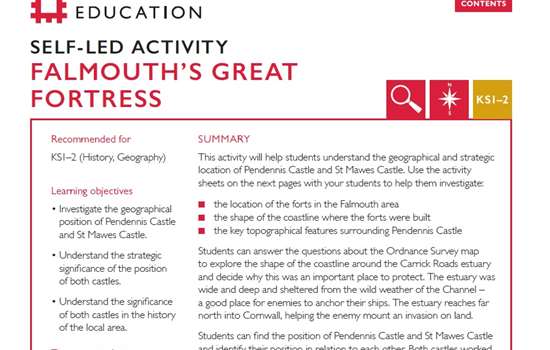
Falmouth's Great Fortress (KS1-KS2) - Pendennis and St Mawes Castle Teachers' Kit
Discover the importance of the location and construction of Henry VIII's device forts in Falmouth with this investigative activity.
-
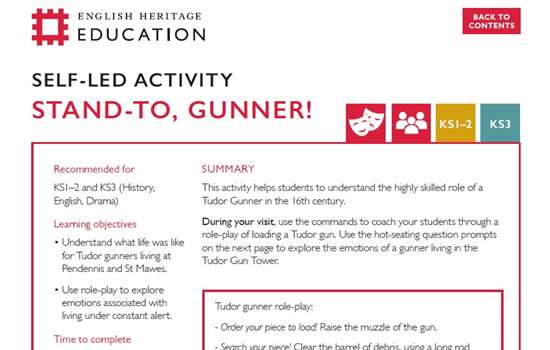
Stand-To, Gunner! (KS1-KS3) - Pendennis and St Mawes Castle Teachers' Kit
Take on the role of a Tudor gunner at one of Henry VIII's artillery forts to learn more about life at Pendennis and St Mawes in the 16th century.
-
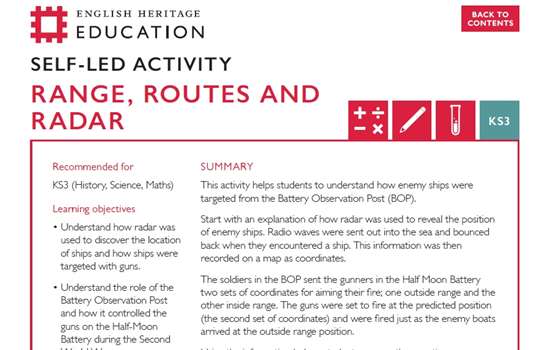
Range, Routes and Radar (KS3) - Pendennis and St Mawes Teachers' Kit
Find out how enemy ships were targeted from the Battery Observation Post (BOP) at Pendennis Castle during the 20th century.
-
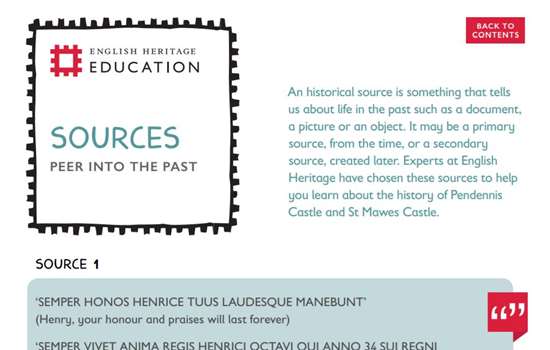
Sources (KS1-KS4+) - Pendennis and St Mawes Castle Teachers' Kit
Explore contemporary sources to uncover the story of Pendennis Castle and St Mawes Castle.
Video Resources
-
History at Home Live! Henry VIII and the Tudors
Join Ben Shires and our expert Roy Porter as they explore the life and times of Henry VIII and the Tudors.
-
Meet Henry VIII
Meet Henry VIII to find out more about this infamous monarch.
-
Postcard from Pendennis Castle
Take to the skies above the Fal estuary to discover the unique and strategic location of Pendennis Castle and St Mawes Castle.
-
Having a Blast at Pendennis Castle: Cannon Conservation on the Cornish Coast
Hear from our experts about our programme of conservation and interpretation at Pendennis Castle.
Link Your Learning
ENGLISH - Read excerpts from John Glasson Thomas's letters recording his time at Pendennis Castle and his journey to the Western Front during the First World War. You could use these to write a newspaper article interviewing John about his experiences of the war.
SCIENCE - Find out more about the development of radar and its uses during the Second World War. How is radar technology being used and developed today?
MATHS - The unique shape of the keeps at Pendennis Castle and St Mawes Castle are particular to Tudor fort-building. Use measurements of the keeps at both castles to calculate the circumference and area of the keeps. Is there a difference between the castles?
GEOGRAPHY - Study the environment around Pendennis Castle and St Mawes Castle and find out more about the Fal estuary. What kinds of wildlife are there? What are conditions like in the estuary today?
ART AND DESIGN - Visit the headland at Pendennis Castle or St Mawes Castle and ask your learners to record their view of the landscape. They could use particular media or styles to focus their creativity and explore how different artists have captured seaside landscapes.
DRAMA - Imagine how military personnel in the Battery Observation Post at Pendennis Castle during the First World War communicated information about their observations in the Fal estuary. Learners could incorporate morse code or semaphore into a short performance about this period in the castle's history.
Visiting Pendennis Castle and St Mawes Castle
Find Out More'Using your local landmarks as part of your teaching is a great way for your pupils to appreciate their local heritage, and understand its significance in a wider historical context. By booking a free education visit you can bring history to life for your class, have fun exploring our sites and gather a range of information you can use back in the classroom. It’s so easy to miss what we have right on our doorstep!
Pendennis and St Mawes Castles have been an iconic presence on the coast of Cornwall for almost 500 years, and have played a vital part in Britain’s coastal defences. Finding out why the castles were built, how they have developed over time and discovering the stories of people linked to the site can provide the stimulus for an exciting cross-curricular project – incorporating a range of subjects including history, geography, literacy and art.
Entry is free for your class and you will find a variety of free downloadable resources to help with your students’ learning in our site-specific Teacher’s Kit. We also offer expert-led Discovery Visits at Pendennis Castle, letting you delve deeper into its history. Once your booking is confirmed, we recommend a free planning visit to help you prepare and plan your trip with confidence. I’m here to support you, so please do get in touch if you would like some help or further information.'
- Helen Kerry, Education Visits Officer (West)
